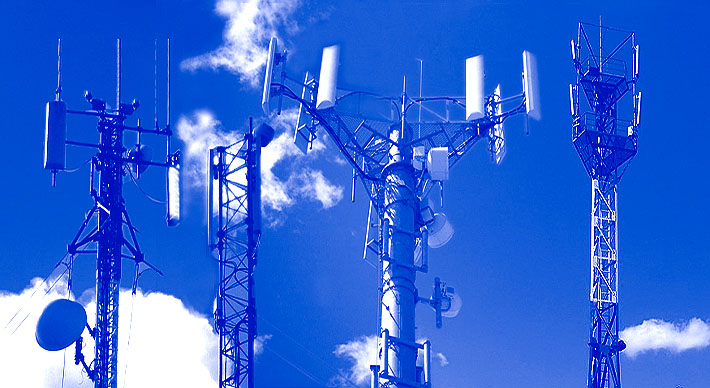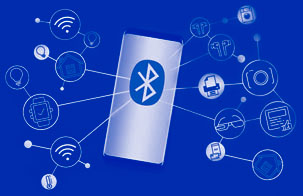Cellular communications
The main feature of cellular mobile communications is that the entire coverage area is divided into cells of coverage areas of a set of base stations. Cellular communications are used not only for their intended purpose - for audio and video communications, text communication via SMS and in messengers, multimedia messages, file transfer. Cellular communications are divided into different standards 5G, 4G, 3G, CSD, GPRS, EDGE, EV-DO, GSM, HSPA, UMTS, LTE, LTE Advanced and many others. This wireless technology allows you to improve GPS, open GSM locks, use alarms and other GSM devices, connect GPRS / EDGE modems, control panels, remote monitoring and maintenance devices, as well as other mobile gadgets.
What is a modern cell phone
A modern cell phone, usually a smartphone, is a complex device that includes several modules. The cellular radio module is responsible for connecting to the cellular network, receiving and making calls, and sending messages. The Wi-Fi module and Bluetooth module are responsible for connecting to devices and networks. Many sensors, such as GPS, gyroscope, accelerometer, and others are responsible for information about the position, movement, and environment of the device, responsible for auto-rotation and other functions.
In addition to directly providing communication, a powerful processor, memory, and storage cope with processing and storing data, and also ensure the operation of applications. A large screen with a backlight and sensor provides communication. The camera allows you to take photos and videos. A powerful battery allows you to work without recharging all day.
How does cellular communication work
Cellular communication is a type of mobile radio communication. Its advantage is that the communication perimeter is divided into a kind of cells, each of which is responsible for a base station. The communication radii of each station partially overlap, which schematically looks like hexagonal cells, which form a continuous network covering a certain area.

The base station equipment allows you to determine the location of mobile subscribers, identifying the subscriber by the SIM card or communication device. The interaction of base stations ensures continuity of communication when the subscriber moves from one cell to the coverage area of another cell.
When a cell phone is turned on, it finds a signal from the nearest base station, the phone sends its unique number to the base station, it identifies it, and a connection is established. After dialing the number, the phone sends a request to the base station via a service channel to allocate a voice channel. The station sends a request to the Mobile Switching Center (MSC), the switch checks with the Home Location Register (HLR), finds out the location of the subscriber and transfers the call to the appropriate switch and then to the base station of the called subscriber. The station contacts the subscriber's phone.
A cell phone can receive and transmit a signal at a distance of up to 40 miles. On highways and in high-rise buildings, when the location changes, the connection may be interrupted. The problem occurs because the phone is connected to one base station, and when the location changes, it switches to the second. In a situation where these two base stations are far apart and are not neighbors in the cellular network, the call may not be transmitted. The connection will be interrupted.
History of mobile communications
Mobile radio communications first appeared in 1921 in Detroit (USA), and by 1950, police, taxis and other city services had access to Detroit cellular radio communications. In the late 1970s, Chicago (USA) began implementing cellular communications for several thousand subscribers. At the same time, cellular communications of the analog standard 1G were being implemented in Canada, Japan, Denmark, Norway, Sweden, Finland, Spain, Great Britain and other countries.
By the end of the twentieth century, cellular communications of the 2G standard with multimedia messages and data transfer speeds of up to 14.4 kbps covered about 150 countries with almost 200 million users. Roaming appeared - connecting to other operators outside the coverage of your cellular network.
In 2001, the third generation of mobile communications arrived. Generation 3G has learned to fully access the Internet at a speed of 2048 kbps for stationary users and up to 144 kbps for those moving at a speed of up to 75 mph. The main technology used in 3G networks is Wideband Code Division Multiple Access (WCDMA), which provides high data transfer rates and improved security measures.
The main technology in 4G networks has become Long-Term Evolution (LTE), based on packet data transfer protocols. In 2009, 4G offered high, 100 Mbps, data transfer rates, a wide range of services and more reliable communications. High-speed Internet access allows not only to exchange voice messages, graphic and video information in HD quality, but also to comfortably play online games and much more.
5G mobile communications technology new radio (NR) operates at millimeter wave frequencies, uses multiple-input and multiple-output (MIMO) and increases data transfer rates to 10 Gbps with ultra-low latency.

